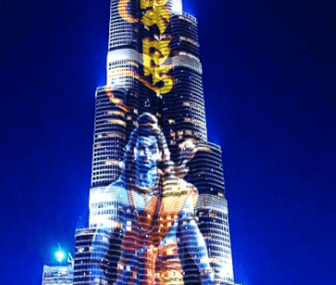
Burj Khalifa Ram Mandir
The Burj Khalifa Ram Mandir serve as compelling case studies in the diverse expressions of architectural brilliance and cultural significance. While the Burj Khalifa epitomizes cutting-edge engineering and is a testament to modern urban development in the UAE, Ram Mandir resonates deeply with the historical and spiritual narratives of Hinduism in India. This juxtaposition invites contemplation on how these structures not only reflect their individual cultural heritages but also influence global perceptions of identity and innovation. What implications does this have for future architectural endeavors and cultural dialogue?
Read also: Top Recruitment Tips for Finding the Best Talent
Overview of Burj Khalifa Ram Mandir
Standing tall as an architectural marvel in the heart of Dubai, the Burj Khalifa commands attention with its soaring height of 828 meters, making it the tallest building in the world since its completion in 2010.
The Burj Khalifa history is steeped in innovation and ambition, symbolizing the UAE’s rapid development and aspirations, as well as its commitment to pushing the boundaries of modern engineering.

Significance of Ram Mandir
The Ram Mandir holds profound cultural and religious significance for millions of Hindus worldwide, symbolizing a historical and spiritual journey that resonates deeply within the community.
Its establishment reflects a rich historical context marked by devotion and struggle.
The temple stands as a powerful representation of religious symbolism, embodying ideals of faith, unity, and resilience, as well as the quest for spiritual identity.
Read also: Art:4hv22s6hiie= Lofi
Architectural Fusion and Design
Architectural fusion in the design of the Ram Mandir exemplifies a harmonious blend of traditional Indian aesthetics and contemporary engineering principles.
This structure harmonizes modern aesthetics with intricate carvings and motifs that embody spiritual symbolism.
The interplay of light and space enhances its divine ambiance, inviting contemplation.
Thus, the Ram Mandir stands as a testament to innovation, celebrating both heritage and modernity in architectural design.
Cultural Impact and Visitor Experience
Blending traditional Indian architecture with modern design has not only transformed the aesthetic experience of the Ram Mandir but also significantly influenced its cultural impact.
This fusion serves as a cultural symbolism, embodying unity and heritage.
Enhanced visitor engagement is evident through interactive exhibits and guided tours, allowing guests to appreciate the temple’s historical significance while fostering a deeper connection to its spiritual essence.
Conclusion
The Burj Khalifa Ram Mandir exemplify the extraordinary spectrum of human creativity, where modern engineering and ancient spirituality converge. This juxtaposition not only enhances the architectural landscape but also fosters cultural dialogues that transcend geographical boundaries. As towering beacons of innovation and tradition, they attract millions, creating a vibrant tapestry of experiences that celebrate both the relentless pursuit of progress and the enduring essence of cultural identity. Such monumental structures inspire awe and reflection, shaping the global narrative of architecture.




